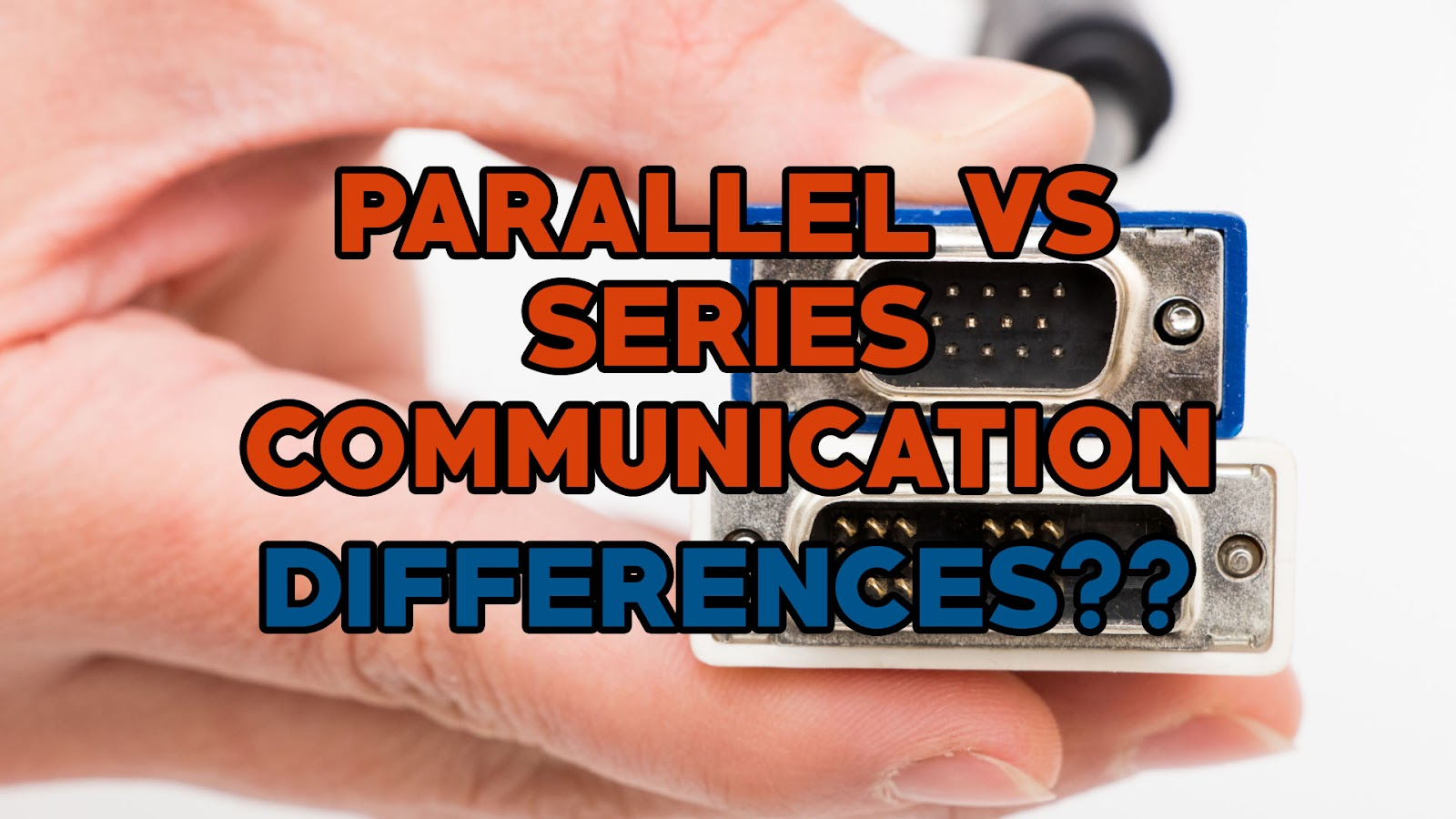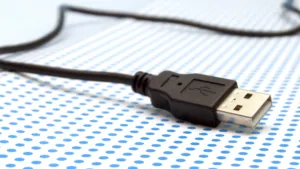Difference Between Serial and Parallel Communication

Difference Between Serial and Parallel Communication
There is a lot of difference between serial and parallel communication. The main difference between serial and parallel communication is that in serial communication, data is transferred through a single link. The data is transmitted via multiple parallel links in parallel instead of parallel communication. Serial communication is more cost-effective than parallel communication since it only requires a single communication link.
Other factors that differentiate them will also be discussed in this article. So stick with us till the end of the article!
What is Serial Communication?
The sender and receiver communicate over a single channel in serial communication. Each bit travels through the channel one at a time as the bits line up at the receiver. Because one bit is transferred at a time, serial communication appears to be slower, but it is actually faster. When there are high frequencies and long distances, data transmission speeds are faster. The communication is also cost-effective since there is only one channel or line. Simple, straightforward, and accurate are the hallmarks of serial communication.
How Does Serial Communication Work?
A freeway or interstate highway can be used as an analogy to illustrate serial communication. Each lane of the interstate represents a bit of data, while each lane of the highway represents a wire used for communication. There is only one lane on the road here, or one wire for serial communication. At the beginning and end of each bit sequence, there is a start and stop bit. Receiving devices receive and assemble data one bit at a time.
What is Parallel Communication?
When several bits are exchanged through the channels or buses simultaneously, it is called parallel communication. Consider the case where there are three bits to be transmitted. Three separate lines will be used by senders and receivers.
Due to the multiple bits transmitting at once, parallel communication is fast when dealing with short distances and low frequencies. Parallel communication, on the other hand, suffers from some issues when the distance and rate are increased. Crosstalk is one of the major problems. Bits can skip into different channels or buses. Receivers' outputs may differ from senders' outputs. Skewing is another problem. It is therefore necessary to wait for the slowest bit to arrive in order to communicate with the receiver. Despite being faster for short distances and low frequencies, the above issues affect parallel communication speed. There are several problems with this communication method, including its unreliability and complexity.
How Does Parallel Communication Work?
In parallel communication, more lanes are required than in serial communication using the same imagery as before. Multi Bits of information can be sent and received simultaneously by devices working in parallel. For a packet of eight bits (or one byte), eight wires are necessary to carry the data over a single wire. Endpoint devices receive data packets simultaneously. During parallel communication, each bit is sent on its own wire or lane. To receive a packet properly and without errors, all data must be received at the same time.
Difference Between Serial and Parallel Communication
Cables
Parallel cables:
You can easily identify parallel cables by looking at the pins on the connector head, as shown in the image below. Individual wires in the cable are directly connected to these pins. You will find an input slot on the female end of the cable for each pin on the male side of the connector head. No interruption occurs between the ends of the connection. A serial cable has fewer wires, so it is generally thicker and stiffer than a serial cable.

Parallel Cables
Series Cables:
In everyday life, you're more likely to encounter serial cables. Serial cables are examples of these. Since the connector head is smaller and does not have pins, it looks significantly different from a parallel cable. Thickness is another factor that differentiates cables.

Series Cable
Drawback and Benefits of Parallel Communication
While reading our article on the difference between series and parallel communication, its important to learn about the drawbacks and the benefit of both of them too. So here I am going to discuss the benefits of parallel communication.
Benefits of Parallel Communication
The use of parallel communication in everyday applications was much more common before the introduction of the USB standard. Prior to the introduction of the USB standard, parallel communication was more common in everyday applications. A parallel interface was largely used with older PCs, from connecting a printer to an external monitor. As a general rule, this standard is fast to work with, which explains its wide adoption. As a general rule, this standard is fast to work with, which explains its wide adoption. A byte-level communication has an eight-fold speed advantage over serial communication. Parallel communication became more difficult, however, due to longer cables and applications.
Drawbacks
Damaged pins:
In addition to the high possibility of damage, connector heads with visible pins can also be damaged. Connector pins bending when trying to connect devices is a very common problem, especially with old printers. An angled connector like this makes lining up the pins more challenging. Since USB cables are usually designed without pins, this problem doesn't occur.
Long-range and high-frequency limitations:
Data transfers at high frequencies are another issue associated with parallel communication. Receiving devices often receive jumbled bits as a result of higher frequencies. Data bits must arrive at the same time in parallel, thus presenting a problem. Messages must be slowed down for the receiver to accept the full packet of data. Receivers can get backed up if this occurs. The incoming bits may interfere with the waiting packets if it cannot accept all the messages at once. Applications requiring short distances benefit from parallel processing.
Cross Talk:
Data lines often cross talk among themselves when engineers are working with wires. Electronic signals can interfere with each other causing cross talk, or noise. There is a high probability of this occurring when wires are positioned too close together. Data can be distorted and errors can occur when there is cross talk
Benefits of Serial Communication
When it comes to connections for devices, serial communication has become the industry standard. Serial has proven that it is the future of connected devices due to its compact size (cables and connector heads), ease of use, and reliability. Serial communication has a number of benefits, including:
Increased Insertions:
Serial port connector heads also last longer than parallel ports because they can be inserted many more times. Furthermore, nearly all potential sources of damage have been eliminated from the plugging process. Additionally, this simplified plugging by removing exposed pins. It is expected that parallel ports will last longer in the future.
Reliability at High Frequencies:
In addition, serial data can be transmitted over a long distance more reliably thanks to its high-frequency nature. Increasing the speed of serial does not cause data to get jumbled because it sends one bit at a time over a single wire. A source device cannot send bits before or after the receiver receives data. Developing and perfecting high levels of parallel optimization is a lot more time consuming than developing and perfecting serial applications.
DrawBacks
There is a disadvantage to serial communication: it is slow. Speed increases with more wires. In parallel communication, applications are able to transfer data faster than serial communication if they are optimized for parallel communication and deal with the bit-level timing issues. Serial communications used to have speed limitations, but they have been overcome by modern technology advancements. There was a prevalence of serial protocols because they reduced space and costs. With the advancement of technology, serial communications can now exceed 10 Gbps with USB 3.1.
Faqs
Question 1: What is an example of serial communication?
Answer: Serial communication (also called RS232 communication) is a protocol for communicating between a microcontroller and other devices. Serial communication is used to exchange data between microcontrollers or between microcontrollers and a PC.
Question 2: What is an example of parallel communication?
Answer: You can use a parallel printer port and cable to connect a computer to a printer using the parallel mode of transmission. The added speed of parallel transmission of data more than offsets the cost of additional wires for printers that are closer to transmitting computers than 6 meters or 20 feet away.
Question 3: What is most common in parallel communication?
Answer: In parallel communications, IEEE-488 is the most commonly used standard interface. As part of Hewlett-Packard's instrumentation network, it was initially referred to as the Hewlett-Packard Instrumentation Bus. The General-Purpose Instrument Bus is now commonly referred to as GPIB.
Final Thoughts
When deciding which standard to implement into devices and designs, serial and parallel communication each have pros and cons. Parallelism is appealing due to its high speed, but it is complicated and expensive to implement. While serial communication is more reliable and has a smaller footprint, making it an appealing alternative. Due to advances in speed, serial communication has become the dominant communication style today.
Polyester vs Polypropylene Capacitors: Explained
What is an Air Core Inductor? [Everything Explained]
Why Do Capacitors Explode?
Principle, Structure and Fault Analysis of Centrifugal Switch
Variable Capacitors: A Complete Guide
Varieties of Electrical Wires and Cables
Flexible Sensor Complete Guide
Difference Btween Amplifier and Current-Sense Amplifier
L78L05ABUTR Regulator: Features, Applications and Datasheet
What is a Multiplexer and How Does it Work? [Explained]










